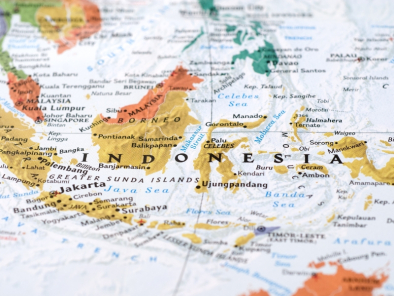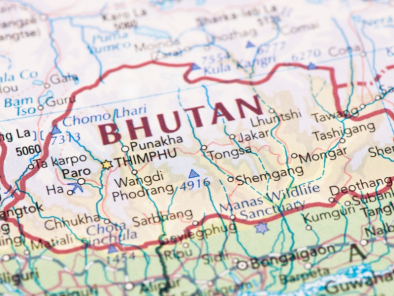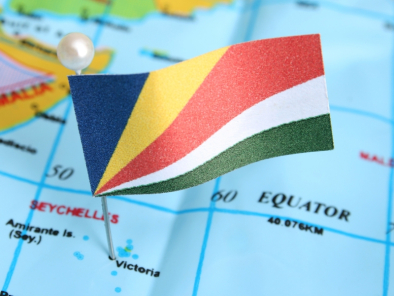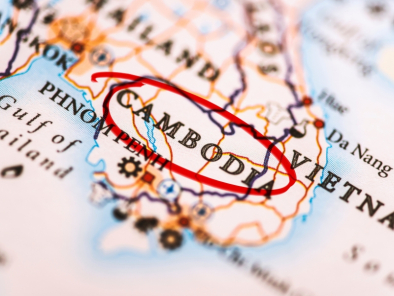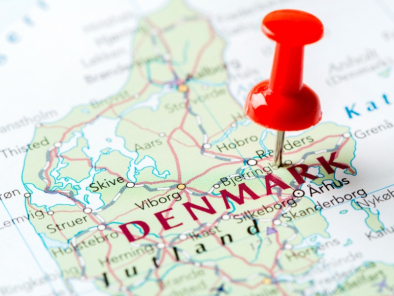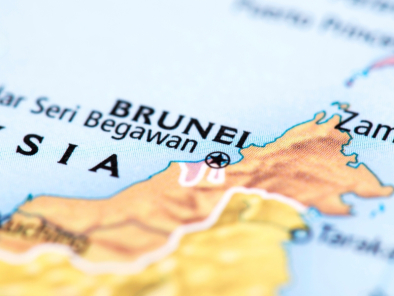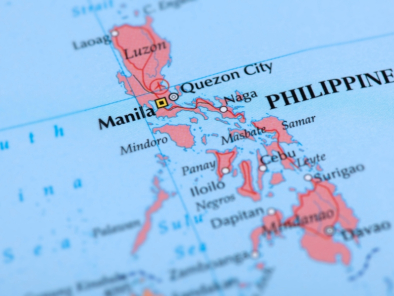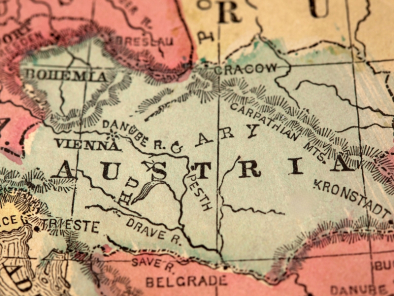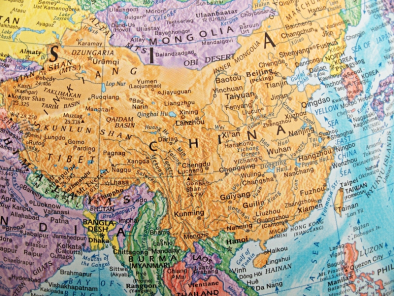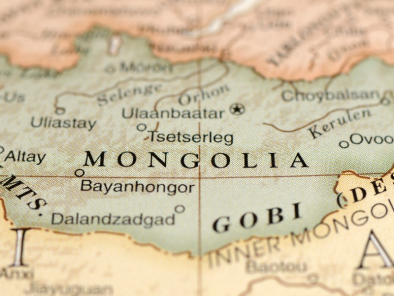
Posted by: Leo Travel Hub
TRAVEL
TIPS FOR MONGOLIA
Mongolia is a far-flung, little visited destination, with much to offer in terms of scenery, wildlife, and historic and cultural sites. Outside the main cities, Mongolians continue to live the traditional life of malchin (herdsmen), and many are nomadic. With one of the world’s lowest population densities, Mongolia’s vast areas of wilderness, desert, lakes and mountains offer plenty of scope for adventurous outdoor enthusiasts. Although independent travel is now becoming more common, travel outside the capital is usually by prior arrangement.
Visa The visa is to be obtained prior to arrival in the country
Main Airports:
Ulaanbaatar (ULN) (Chinggis Khaan) is 15km (9 miles) from the city.
To/from the airport: Buses run to the city center (journey time – 30 minutes). Taxis
are also available (journey time – 15 minutes).
Facilities: Bank, duty-free shops, car hire, post office and a restaurant.
Getting There by Air:
The national airline is Mongolian International Air
Transport (MIAT) (OM)
Getting
Around by Rail:
There are 1815km (1127 miles) of track. The main line runs from north to south:
Sukhbaatar–Darkhan–Ulaanbaatar–Sainshand. Branch lines serve the principal
industrial regions.
Getting Around by Road:
Paved roads are to be found only in or near major cities.
Bus: There are frequent bus services between major towns, but the
roads are mostly unpaved.
Getting Around Towns and Cities:
There are frequent bus and trolleybus services in the city.
Journey Times:
The following chart gives approximate travel times (in hours and minutes) from Ulaanbaatar
to other major cities/towns in Mongolia.
Language:
Khalkh Mongolian is the official language. Kazakh is spoken by 5 per cent of
the population. There are also many Mongolian dialects.
Religion:
Buddhist Lamaism is the main religion, although there is no state religion.’
Electricity:
230 volts AC, 50Hz.
Climate:
A dry climate with short, mild summers and long, severe winters
(October to April). Some rain falls during summer and there is snow during
winter.
There are four
well-defined seasons, and on average, the sun shines for well over 200 days a
year. The climate is harsh continental with low precipitation. The temperature
varies greatly within the year; the same phenomenon may also occur within a
day.
The last 60 years of
meteorological observation show annual average temperatures of 8.5C in the Gobi
and -7.8C in the mountains. The extreme minimum temperature is between 31.1C
below zero and 52.9C below zero in January. The extreme maximum temperature is
between 28C and 43.1C in July. Annual precipitation is low, averaging
200-220mm, ranging from under 50mm in the extreme south (Gobi desert) tom 400mm
in limited areas in the north. Most precipitation occurs in June, July and
August, and the driest months are November to March.
Required Clothing
Medium weights are worn during summer, with very warm heavyweights advised for
winter.
Tipping: Not customary, if leaving a tip, 10 per cent is the norm.
Currency Information:
Tugrik (MNT). Notes are in denominations of MNT10,000, 5,000, 1,000, 500,
100, 50, 20, 10, 5 and 1. Coins are in denominations of MNT500, 200, 100, 50
and 20.
Currency Exchange
Official organizations authorized to exchange foreign currency include
commercial banks in Ulaanbaatar and bureaux de change at certain hotels. The
easiest currency to exchange is the US Dollar.
Credit/Debit Cards and ATMs
Accepted by main commercial banks, large hotels and a few shops and restaurants
in Ulaanbaatar. Credit card cash advances can be obtained at the Trade and
Development Bank.
Traveller's Cheques
American Express Traveller’s Cheques are most widely accepted although Thomas
Cook Cheques are accepted by the Trade and Development Bank. To avoid
additional exchange rate charges, travelers are advised to take traveller’s
cheques in US Dollars. Traveller’s cheques can be difficult to exchange outside
the capital.
Banking Hours
Mon-Fri 0930-1230 and 1400-1500
Tourist
attractions in Mongolia focus on scenery, historic features and cultural
heritage.
Mongolia
has diverse and distinctive flora and fauna, including rare animals like the
argali wild sheep, the takhi (the only wild horse species, also called the
Przewalski horse), camels, snow leopard and ibex.
Many
dinosaur fossils have been found in the Gobi desert, with stunning examples
displayed in Ulaanbaatar`s Natural History Museum.
Mongolian history centres on the world-famous Chinggis Khaan (whom foreigners call Genghis Khan), the 13th century warrior-statesman who united the varied tribes into the Mongolian nation that controlled the greatest land empire the world has ever seen.
Ulaanbaatar
The
capital, Ulaanbaatar, is the country’s political, commercial and cultural
center.
Ulaanbaatar,
the capital city, is on the Tuul River, surrounded by majestic mountains. The
combination of these pine-clad mountains, wide boulevards, vast public squares
and many parks give the city a spacious feeling, while the ger districts and
bustling marketplaces give it a rustic charm.
There are a number of museums in the city, the largest being the Museum of Natural History. The
palaeontological section has a magnificent display of the skeletons of giant
dinosaurs. Others include the Zanabazar
Museum of Fine Arts, the National
Museum of Mongolian History, the Military
Museum, Palace of Bogd Khaan. There are also several Buddhist temple museums, and the
still-functioning Gandan Monastery
is worth a visit. Ulaanbaatar also has several theaters and theater groups,
such as the State Opera and Ballet Theater, the State Drama Theater
and the Folk Song and Dance Ensemble. The Ulaanbaatar State Public Library has a unique collection of
11th-century Sanskrit manuscripts.
The most visited city
sites are Sukhbaatar Square, Gandan
monastery and the Zaisan Hill War
Memorial. Other cultural sites are the National Art Gallery, the Opera and
Ballet and theDrama theaters, and cashmere factories.
Karakorum:
Karakorum is one of the
country’s major tourist destinations.
The site of Chinggis Khaan’s fabled city,
administrative centre of an enormous empire, Karakorum was founded in 1220 in
the Orkhon valley, at the crossroads of
the Silk Road.
It was the seat of power of the
Mongol Empire until Khubilai Khaan transfered it to what has nowadays become
Beijing. The city was destroyed and its materials used to build the monumental
400m walls and 108 stupas that surrounded Mongolis's first Buddhist monastery
of Erdene Zuu, built in 1586.
Inside
the walls by 1792 there were 62 temples and 10.000 lamas, and stone turtles
marked the boundaries, two of which can still be found.
Nearby are the Turkic monuments and rock inscriptions dating from the 8th and 9th centuries.
Gobi Desert:
The
Gobi desert, in the south, is a vast zone of desert and desert steppe covering
almost 30 percent of the country. The area is often believed to be a lifeless
desert, but is actually mostly steppe, inhabited by camel herders, rich in
wildlife.
Mongolians count 33 different sorts of gobi, and sandy desert makes up only three per cent.
The
temperature climbs to plus 40C in summer and as much below freezing in winters.
It
is home to the bactrian (two-humped) camel, and Gobi people hold a camel
festival and camel polo every year.
Here, in 1923, a US Natural History museum expedition led by Roy Chapman Andrews found the first nest of dinosaur eggs the world had ever seen.
Khuvsgul:
Known
as the Dark Blue Pearl, Lake Khuvsgul is Mongolian deepest lake.
In
the northernmost aimag, its outlet is the largest tributary to Siberia’s Lake
Baikal. At 1,645m above sea level, it is frozen from January until April or
May, after which a ferry runs between Khatgal and Khankh, the northern and
southern towns within the boundaries of the National Park. Here, shamanism
survives as a religion among the Darkhads, and the Tsaatan reindeer tribesmen.
Tourists can trace the lake shores by horse, foot or on ship Sukhbaatar.
Lake Khuvsgul is an important migration route for birds from Siberia, haven for birdwatchers. The Dayan Deerhiin cave has ancient wall paintings.
Gorkhi-Terelj:
Open
all year, Terelj (meaning dahurian rhododendron) is a spectacular valley park
only two-hour drive from Ulaanbaatar, with green meadows carpeted with a
dazzling variety of edelweiss and other wildflowers, fascinating rock
formations against a backdrop of pine-clad mountains and wooded streams.
It has been called ‘a museum of nature and the animal kingdom’.
Khan Khentii:
The
homeland of Chinggis Khaan, Khan Khentii is covered with forests, taiga and
mountain forest steppe.
It is described in The Secret History of Mongols, and is a protected area north-east of Ulaanbaatar.
Manzushri
Monastery:
This
is in a luxuriant valley of the Bogd Khan Mountain, Tuv Aimag, and an hour’s
drive from Ulaanbaatar. The monastery was established in 1733 with 20 temples
and 300 monks.
Destroyed in 1932, the only remaining temple has been restored and a museum tells its story. ]
Khorgo:
Khorgo is an extinct basalt-covered volcano east of Lake Terkhiin Tsagaan National Park, Arkhangai Aimag, with interesting bubbles of solidified lava called the basalt gers.
Gun-Galuut:
Gun-Galuut Nature Reserve is truly the marvelous combination of mountains, steppes, pretty lakes, rivers and wetlands with its famous rare wildlife species. It is a home to the world endangered Wild mountain sheep-Argali, White-napped crane, Siberian White Crane, Hooded Crane, Swan Goose, Whooper swan and so on. Over 80 Argali sheep inhabit peacefully now and rare birds coming every summer in Gun-Galuut. Tourists visiting the Nature Reserve have the opportunities to do watching and taking photos of the endangered species, fishing, rafting and kayaking in the lakes and rivers, hiking, trekking and camping in the beautiful and peaceful nature, visiting nomadic family, riding horse, yak and camel and getting introduced to traditional nomadic lifestyle and culture. The reserve is only 2 hour drive from Ulaanbaatar to the east.
Shopping:
In Ulaanbaatar, there are a few duty free shops and restaurants
where convertible currencies are accepted. In all other shops, local currency
must be used. The best buys include pictures,
cashmere garments, camel-wool blankets, national costumes, boots, jewellery,
carpets, books and handicrafts. The notorious black market on the
outskirts of Ulaanbaatar is a large, crowded flea market which sells a huge
variety of items. Suitable for the adventurous traveller, it is patronized
mainly by local people. Pickpockets can be a problem.
Shopping hours:
Mon-Sun 1000-1800 as a general guide although times and days vary considerably.

